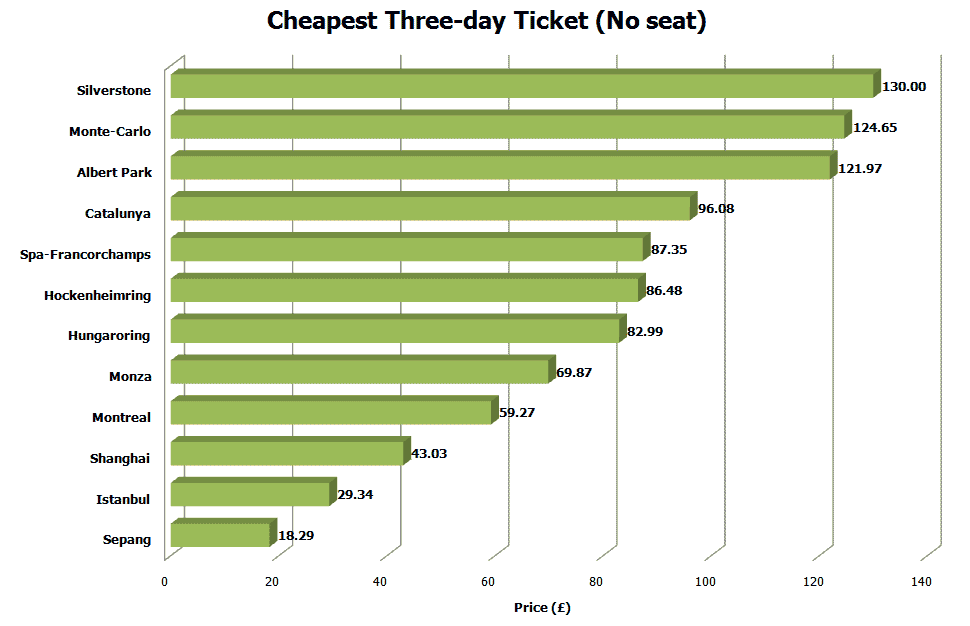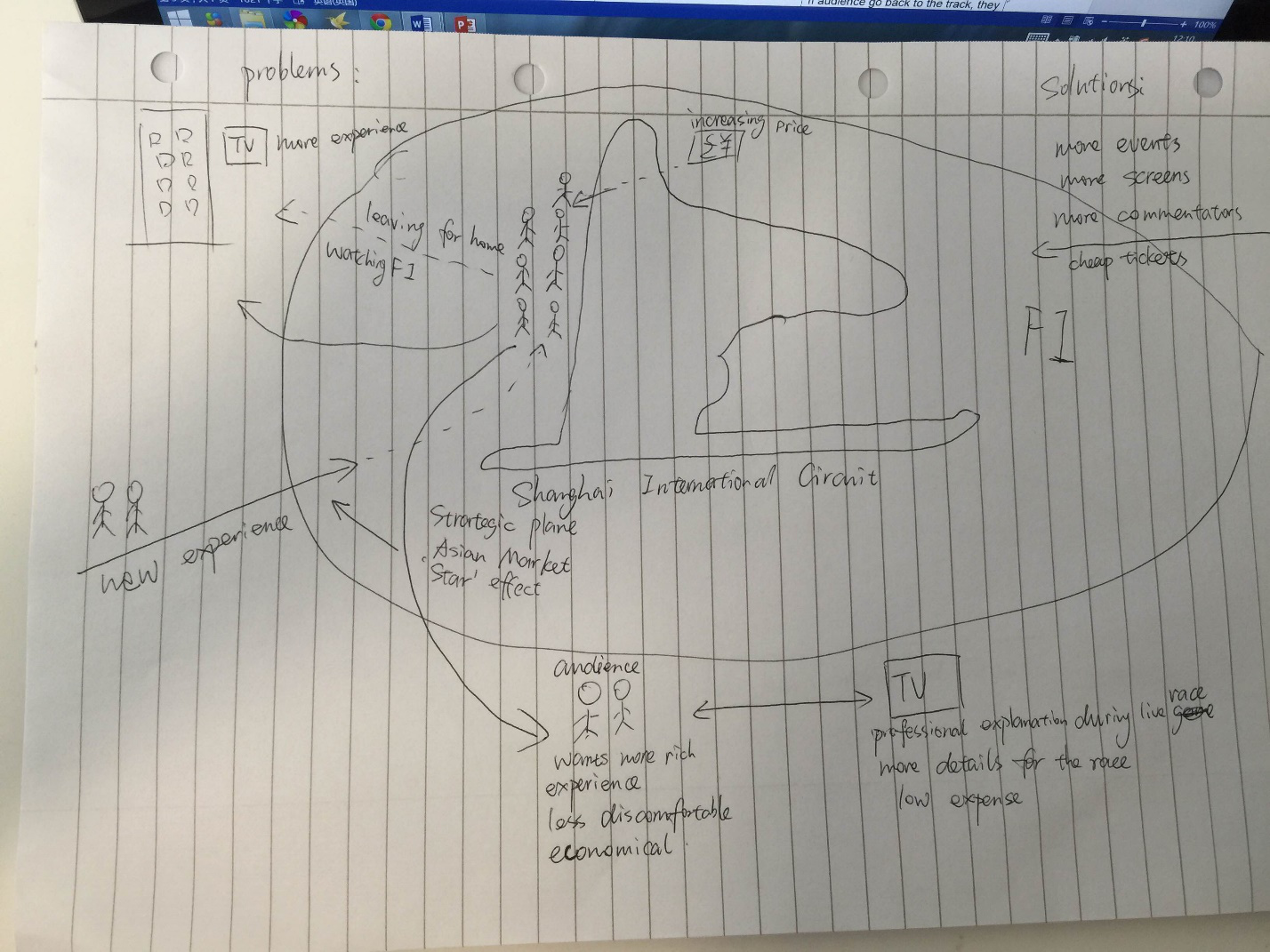备案号:辽ICP备19007957号-1
![]() 聆听您的声音:feedback@highmark.com.cn企业热线:400-778-8318
聆听您的声音:feedback@highmark.com.cn企业热线:400-778-8318
Copyright ©2015- 海马课堂网络科技(大连)有限公司办公地址:辽宁省大连市高新技术产业园区火炬路32A号创业大厦A座18层1801室
PART I
1. Introduction
F1 Grand Prix (FIA Formula One World Championship) from a simple and coterie sports game has been fostered to one of the three major sporting events in the world today. The rich experience in brand creation in the world and the flash in the pan of its business operations bring unlimited inspiration to the development of sports. F1 Grand Prix is the representative of industry's highest speed pursuit as the auto (F1 Confidential, 2013). It embodies the perfect car culture. Nevertheless, financial crisis, F1 Grand Prix inevitably also suffered from a severe blow. Under the situation where financial conglomerates, car manufacturers and IT companies and other sponsors withdraw as well as the imbalance between revenues and expenditures in the fleet, F1 the world's most expensive sports are seeking change. This assures that F1 is compatible with the development trend of environmental protection, such as new energy, low-carbon society and upgrade of industrial technology. Chinese F1 race is rising gradually, that is to say the market has not been mature (Leggett, 2014). So has the operation. Consuming group is not as interested in car racing as the group in other country. Due to lacking of the atmosphere of racing culture, there is a decreasing number of audience at track in Shanghai (F1 Confidential, 2013). These are the impact factor in the development of F1 race in China. For example, ‘Budget cap’ strategy itself is unreasonable and unfair, so its introduction is an inevitable failure. Implementation of effective operational management is increasingly important. Faced with global competition, corporate executives have an urgent need for some of the basic concepts of operations management relations and a deep understanding. More importantly, they must know how to use this knowledge to maximize quality and productivity (Bernstein, 2010). As can be seen, according to its own characteristics tournament, to develop a reasonable and feasible operating strategy, in order to make F1 Grand Prix stable and sustainable.
(Walker, 2012)
2. Essential components for the effective operation management
For the live race at the track, screens are probably the significant method to provide rich experience. With the screen, audience would have essential ideas on weather, the strategy of each team, ranking etc. the screens are supposed to make up the gap between televisions and tracks. Thus, this digital technology would be used as an example to outline components for effective operation management. Offering audience rich experience might be a core to attract people back to race track for live event. There are three components for the effective operation. Firstly, the operation manager should make a design of the whole operations processes and how to provide participants with products and services (Stevenson & Sum, 2009). For example managers should be aware of how many display screen are required. Then, once designs are in place and operational, managers should ensure the plan going well and everything is under their control (Lewis, 2003). In this case, manager should make sure the screen is setting up before the audience enter the track. Last but not least, managers have to assure quality of the operation during the race game (Forker, et al., 1996). Manager should keep an eye on the screen. The quality of screen is very important. If a screen does not work, the experience would not be rich for the audience. It is worth noting that all three components have to be addressed together. These are not three separate work (Pitt, et al., 1995).
3. F1 Grand Prix overall operating strategy
For a long time, dissatisfaction of the team with the legacy of 'Concorde Agreement' is mainly reflected in two aspects: First, the team has no right to speak for rulemaking; the second is that the teams are all disappointed with the economic return, namely team bonus is too low. Under the weight of the financial crisis, F1 Grand Prix existing imbalance is fully exposed. In the new version of the 'Concorde Agreement', each team has been participated in the discussion on the rulemaking authority and has deny the right (Bernstein, 2010). The new rules are still the mainly made by the FIA (FIA), but in the end whether to implement, how to implement, are needed a joint decision with the teams. The signing of the new 'Concorde Agreement' then let F1 rebalancing. In this case, under the difficult situation in order to survive sustainably for a long term, F1 Grand Prix has to ensure that the new 'Concorde Agreement' will take a priority and be implemented effectively.
3.1 The territory of F1 is eastward, opening the Asian consumer market.
This is considered as operation strategy priorities model. Think globally, the impact of the financial crisis on the European economy is serious, but the impact of the Asian markets are relatively small. More importantly Asian motorsport industry is just beginning. To put more into the Asian Grand Prix venue, is undoubtedly a good choice. From the Chinese Grand Prix, Bahrain Grand Prix and the Grand Prix in 2009 in Singapore, to the F1 Grand Prix in 2010 organised in Abu Dhabi, we could say that some Asian countries have begun to participate in organized sport and some companies provide sponsorship for F1 Grand Prix. The reason for this is that this is a huge reservoir of value in emerging markets, and the consumer groups have passionate and expectations for the F1 Grand Prix.
3.2 Developing a 'star' driver, to improve the visibility of the event.
As can be seen from the return of Michael Schumacher, the impact brought about by celebrity effect is immeasurable. From 'glamorous' Beckham in Football, 'Air' Jordan in basketball, 'King' Federer in tennis, etc., their influence in respective fields is enormous. Consumers may begin like a sport and keep an eye on a sport because of a star athlete on this sport. In the racing world known as the 'Rain King' the F1 racer Michael Schumacher, in his retirement years, F1 Grand Prix spectators reduced by one third in 2010. 2010 Schumi came back, this was no doubt hit a shot in the arm to race in F1 under the financial crisis. Thus, the birth of a star athlete, is not only to bring their own unlimited benefits, and can better improve the visibility of the event and enhance the influence of events as well. This operating strategy is adopted based on customer value model. Comparing with home watching, being in audience at track, people would have more chance to follow their race heroes or teams.
3.3 Improving digital technologies of F1 Grand Prix, to enhance the influence of events.
The mass media and television and popularity of sports under the correct operation can not only bring great social effects, but also can make these two industries to achieve win-win results. Improving televised ability and increasing the spread of different ways and setting up a different broadcast machine bit are main methods attract more viewers to watch the event at the track. Watching F1 at track has a big problem is that audience is lacking of overall impressions, which is supposed to the most important not like football. When they watching at track they can only watch the motors for few seconds. However, if they watch TV at their home, they would enjoy this meal with a splendid experience. F1 is a model of success for professional sports organization, and F1 on TV is the perfect sports and television model combination. We can say that the development of television played an important role in F1 promoting. However, due to television and high price of the ticket, more and more people prefer watching the racing at home for a better viewing experience (Collantine, 2012) (please refer to Figure 1). In order to attract people to come back, the track during the racing has to offer them much more rich experience than before. This is so called the service gap model. With digital technology the gap between home watching and track watching would be made up.

Figure 1. The cheapest ticket for F1.
Source: (Collantine, 2010 )
There are about 20 stations of the Formula One race Championship (F1) in one year. The annual tour events exist around the world while the frequency of making race is about every two weeks. Depend on the development of the situation in the world now, the eyeball economy would be an important feature of the new economic era. As one of the international sports competitions of high-level commercialization, F1 race bring many obvious economic benefits as well as arouse public attention. According to long term development normal, this event will greatly promote the development of tourism, transportation, real estate and service industry in Shanghai and surrounding cities. Moreover, F1 race can also increase employment opportunities in the city, in addition to the construction of the racing track, it also involves water, electricity, transportation, communications, repair and other industries. According to macroeconomists analysis, investment results of F1 race and events consumer bring a positive influence to local economic growth. As the most developed regions of auto industry in China and the most sophisticated machinery technology boot in the world, Shanghai had a huge change in development of automotive industry because of F1, while the influence will continue. Overall, the F1 race in Shanghai is successful, due to the unique and superior conditions of Shanghai. The economic benefits generated by F1 race in Shanghai may much more than in other cities of China. F1 will bring enormous economic and culture radiation effect.
From the inaugural F1 Chinese Grand Prix held to now, there are 12 years. The number of spectator has decreased than before. In all the drivers, Massa in Williams team and Jenson Button in McLaren team both witnessed the 12 years experience of China station. Massa bluntly said, “Maybe, we have to let more people come here to watch the game. I do not know whether it is because the fare is too expensive. But the fans will always be waiting for you at the hotel. It was a lot of fans, they might do not at the track, so we must try to get them back on the track.” Jenson Button, the World Champion in 2009, agree with the former view," It looks like we need to do more to promote our event in the city, because when you come here, in addition to fans waiting in the hotel, no one seems to know where the F1 Grand Prix will be held. However, seeing both men and women fans show their enthusiasm for F1 still feel great.”
This reporter who is come from London thought that the atmosphere of F1 Chinese Grand Prix is really good but need more effort for the promotion of F1. There are lots of Ferrari fans in China, and KIMI fans are also very much. They holding a banner are very exciting when watching on the circuit. The atmosphere in Chinese station is much better than in Malaysian station. As mentioned above, the flag flying everywhere in Chinese station, but compared with other sub-stations, the number of spectators was decreased a lot. According to reports, the F1 fans of Malaysia seem more understanding about race. The price of ticket may be another factors. A few years ago, the ticket price in Malaysia is cheaper than in China, and practice sessions in Malaysia are free to watch. However, watching race on television for Chinese audiences are usually free. With the improvement of broadcast technology, the audience can often get a better viewing experience through television. In general, weak promotion and high price ticket is the main factors to let audience away from the track.
PART II
4. Rich Picture

Source: (Walker, 2012)
5. Root Definition
X-this system is to improve tickets sell problems.
Y-by means of diversified activities, promoting with media and changing the model to attract investment
Z-in order to increasing the tickets sale, calling for people watch race at the tracks.
6. CATWOE analysis
|
C |
The audience |
|
A |
Operation managers |
|
T |
The audience ègoing back and watching race at the track from television |
|
W |
If audience go back to the track, they would have much richer experience with new introduced digital technologies. They would have more chance to follow their favourite teams or drivers. |
|
O |
Shanghai International Circuit or other govern body, such as FIA |
|
E |
Telecast technology, high price tickets, less culture of motor sports and overcrowded transportation. |
7. The explanation for process design (Chinese operating strategy for F1 Grand Prix)
There are two types of process plan, AS IS (see 4.1) and TO BE plan (see 4.2 and 4.3).
7.1 Changing the business model, to attract investment.
Caused by the global financial crisis, the world economic is suffering from a downturn (Dietl & Franck, 2007). Consequently, the business investment in the field of sports is becoming increasingly scarce. Shanghai F1 organizers must focus on the reality of the situation. Getting rid of their own subjective situation, according to the conditions and economic characteristics, the organisers make operational strategy in accordance with the business if the soul of F1. Changing the operation mode is necessary. Operational plans and mode should be in line with Chinese characteristics. The racing culture should be cultivated. F1 organisers need to create a huge potential market in China, in order to attract more businesses and individuals to invest for the event.
7.2 Alliance with media for joint promotion of the F1 race.
For Shanghai or the country, the car sports is still in initiation stage. There is no formation of a racing culture. Consumers' understanding of motorsport is extremely rare, and there is no racing concept in the mind. Therefore that consumers are willing to watch a car race is quite difficult to achieve. All in all, a better understanding of the car is needed that is to say consumers' understanding of the racing is a priority. CCTV Through a strategic alliance with the Shanghai International Circuit to get F1 broadcast rights, so the use of CCTV powerful media resources to jointly develop the Chinese car market, and then publicize racing culture (Leggett, 2014).
7.3 Carrying out diversified racing activities to improve consumer participation.
For the F1 race held in China, the tournament organizers would not just let consumers to simply watch a wonderful intense F1 race. As mentioned Chinese car culture has not yet formed, consumer participation in the game is still relatively low. Tournament organizers should carry out with a variety of racing events to allow consumers to participate. Through their participation, viewers could understand and master the knowledge of events to stimulate and develop an interest in motorsport. For example, during the event carnival activities are held annually. Racing-related keynotes should be launched and so on. With these methods the country's car culture will be formed gradually, to attract consumers to pay attention to F1 Grand Prix (Kharpal, 2014).
The main objective of enterprise operations management is to control the quality, cost, time, flexibility, elasticity and agility, which is the fundamental source of corporate competitiveness. Therefore, operations management has an important role in the business. Especially in the past three decades, with expansion of the production scale modern enterprise, technology and knowledge-intensive product continues to improve. Processes of products of production and service are increasingly complex. Market demand is increasingly diverse and various as well as increasingly fierce competition in the world. These factors are making the operational management itself constantly change. Especially in the last decade, with the rapid development of information technology for operators to a new powerful tool is added. It is a much more abundant, more expanded scope, and more complete system. In order to translate the performance objective into operations priorities, performance is compulsory. With performance management employee would be motivated to realise the goal they set with the managers according to plan of the enterprise. The purpose of performance management is to inspire staff enthusiasm through and improve staff capacity and quality in order to achieve the effect of improving corporate performance objectives. Once the objectives are realised, the operation priorities would be translated. Firstly, on goals and how to achieve the goals are needed to reach a consensus. Performance management is not only a simple task management, but also requiring particular emphasis on its communication, coaching and employee capabilities improvement. In the F1 circuit, operational managers should talk about the objectives with many parties, such FIA, sponsors and teams. Once it is set up, managers should make a detail plan to operation. During the process of this translation, manager should assess the performance promptly. This evaluation could be method to find the problems during the process. Once found, it would be corrected accordingly. When the assessment is finished, feedback is necessary. Ultimately, this target is completed, thus the operation priorities would be translated as well. For the implementation of new process, there are some resources. Nowadays, China’s enterprises need a good platform to promote themselves. F1 could meet this need. By introducing commercials of these enterprises, venues would be increased and the tickets could be reduced probably. If big teams, such as Scuderia Ferrari, McLaren Honda and Mercedes AMG Petronas F1 Team, have third drivers, they would sign Chinese drivers, which would be great for the promotion in China. In China, there are many professionals in F1, they could give speech to children before or after the race. In addition, government can invest in this area. After several years, the culture would be formed, and then people are consequently willing to go to the track for the race.
Balanced Scoreboard is used for the evaluation of the post implantation. The financial dimensions of the Balanced Scorecard starting is starting from the results. It directly reflect the impact of the current accounting period of the implementation of the strategy of operating performance and is commonly used as a traditional business indicators (Gunasekaran, et al., 2001). According to the report, 2013 season would witness a fall by about 10% of Formula One's viewing (ESPN Staff, 2014). There was 229 hours broadcast for F1 in 2012 in China. This figure declined by 93 hours compared to 2011. This led to a decrease to 48.89 million from 74.5 million watchers at track. This number was about 4% of the Chinese population – (Grandprix247, 2013).
Financial-Under the changing situation and the current market environment, the company's strategic goals is adjusted to changes in market demand as time goes by. In all stages of the life cycle of enterprise financial objectives are not the same, so the financial analysis of the selected indicators are quite different. F1 is now stay in the mature phase of the enterprises. It has a fixed customer base already. At this time the company's strategic goal is to maximize cash back mainly, including the percentage of non-profit clients, total investment, (per unit of output for each transaction) evaluation unit cost, total return, etc. (Kaplan & Norton, 1995).
Customers-In order to meet the needs of the market-based competition in the market environment, the customer is the direct source of profit for each business goals (Kaplan & Norton, 1995; Kaplan & Norton, 1996). meeting customer needs better and improving the level of customer service, are approach to achieve corporate strategic objectives on F1‘s own initiative. In this case, F1 and organisers at Shanghai should offer audience much richer experience and then audience would go back to the track for watching. 'Creating value for customer’ has become F1’s priority. Customers of BSC considers the process level indicators focused on meeting the needs of core customers (Kaplan & Norton, 1995).
Internal business process-In a market economy, invincible basis of enterprises are those business processes in favour of maintaining the core competitiveness of enterprises. These processes for the enterprise have a decisive role in the development of production. By the means of internal business process, high quality of race would be provided with audience and the financial plan would be finished as well. A good internal business process would give F1 viewers a unforgettable impression. This will form an attraction they would be back to the track again (Norreklit, 2000).
Learning and growth-The competitiveness of enterprises comes from all individual employees together and then form the core competitiveness. F1 as one of the most popular game in this world, has to learn to improve itself. In order keep being attractive, F1 has to upgrade the digital technologies constantly to make experience rich for the live audience at the track. That is to say, the govern body of the race has to maintain its ability to improve the game for audience (Lipe & Salterio, 2000).
Bernstein, V., 2010. U.S. Formula One Team Struggles to Reach Starting Line. [Online]
Available at: www.nytimes.com/2010/02/21/sports/autoracing/21autos.html
[Accessed 17 4 2015].
Collantine, K., 2010 . Are F1 fans getting ripped off? Cheapest and dearest tickets prices revealed. [Online]
Available at: http://www.f1fanatic.co.uk/2010/01/20/2010-f1-ticket-prices-revealed/
[Accessed 18 4 2015].
Collantine, K., 2012. F1 General Admission ticket prices rise nearly 10% in two years. [Online]
Available at: http://www.f1fanatic.co.uk/2012/02/02/f1-general-admission-ticket-prices-rise-10-years/
[Accessed 18 4 2015].
Dietl, H. M. & Franck, E., 2007. Governance Failure and Financial Crisis in German Football. Journal of Sports Economics, Issue 10.1177/1527002506297022.
ESPN Staff, 2014. F1 viewing figures dropped by 50 million in 2013. [Online]
Available at: en.espnf1.com/f1/motorsport/story/144365.html#VqSyjzOWTpZq8RIQ.99
[Accessed 18 4 2015].
F1 Confidential, 2013. IS FORMULA 1 STILL NO.1?. [Online]
Available at: http://sportsmarketer.net/2013/02/21/is-formula-1-still-no-1/
[Accessed 17 4 2015].
Forker, L. B., Vickery, S. K. & Droge, C. L. M., 1996. The contribution of quality to business performance. International Journal of Operations & Production Management, Volume 16(8), pp. 44-62.
Grandprix247, 2013. FORMULA 1 VIEWING FIGURES DOWN IN 2012 DESPITE THRILLING SEASON. [Online]
Available at: http://www.grandprix247.com/2013/02/18/formula-1-viewing-figures-down-in-2012-despite-thrilling-season/
[Accessed 18 4 2015].
Gunasekaran, A., Patel, C. & Tirtiroglu, E., 2001. Performance measures and metrics in a supply chain environment. International Journal of Operations & Production Management, Volume 21(1/2), pp. 71-87.
Kaplan, R. & Norton, D., 1995. Putting the balanced scorecard to work. Performance measurement, management, and appraisal sourcebook, p. 66.
Kaplan, R. S. & Norton, D. P., 1996. Using the balanced scorecard as a strategic management system. Harvard business review, pp. 75-85.
Kharpal, A., 2014. F1 in China: Stuck in the slow lane. [Online]
Available at: http://www.cnbc.com/id/101671278
[Accessed 17 4 2015].
Leggett, T., 2014. Why is Formula 1 in crisis?. [Online]
Available at: http://www.bbc.co.uk/news/business-30127516
[Accessed 17 4 2015].
Lewis, M., 2003. Analysing organisational competence: implications for the management of operations. International journal of operations & production management, Volume 23(7), pp. 731 -756.
Lipe, M. G. & Salterio, S. E., 2000. The balanced scorecard: Judgmental effects of common and unique performance measures. The Accounting Review, Volume 75(3), pp. 283-298.
Norreklit, H., 2000. The balance on the balanced scorecard a critical analysis of some of its assumptions. Management Accounting Research, Volume 11(1), pp. 65-88.
Pitt, L., Watson, R. & Kavan, C., 1995. Service quality: a measure of information systems effectiveness. MIS quarterly, pp. 173-187.
Stevenson, W. J. & Sum, C. C., 2009. Operations management. Boston, MA: McGraw-Hill/Irwin.
Walker, K., 2012. Is TV killing Formula One?. [Online]
Available at: http://en.espn.co.uk/f1/motorsport/story/86509.html
[Accessed 17 4 2015].

 24h在线客服
24h在线客服







备案号:辽ICP备19007957号-1
![]() 聆听您的声音:feedback@highmark.com.cn企业热线:400-778-8318
聆听您的声音:feedback@highmark.com.cn企业热线:400-778-8318
Copyright ©2015- 海马课堂网络科技(大连)有限公司办公地址:辽宁省大连市高新技术产业园区火炬路32A号创业大厦A座18层1801室
hmkt088